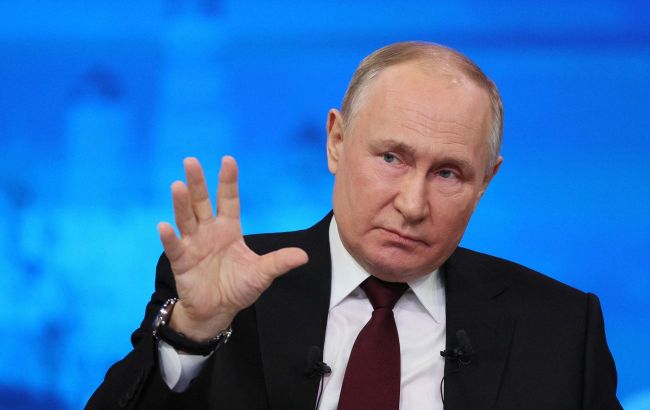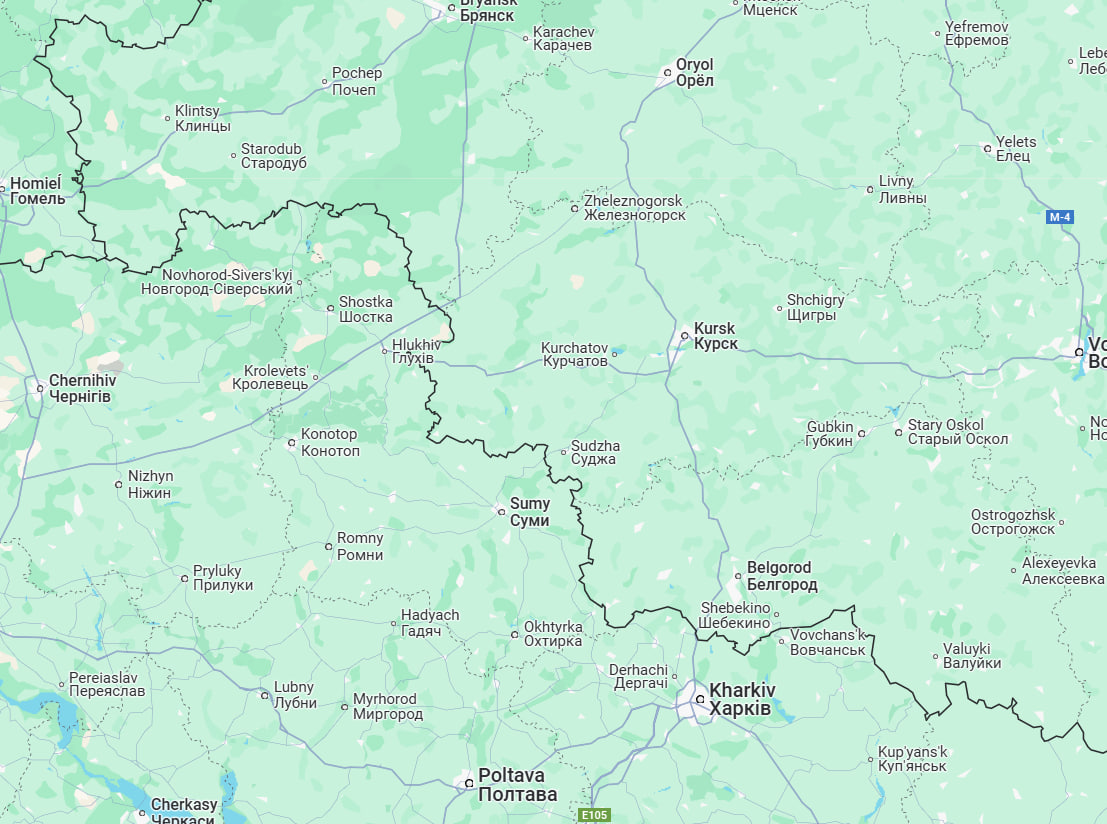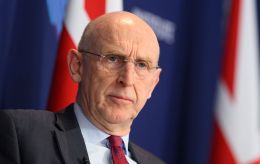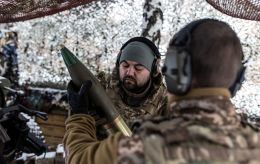Putin declares buffer zone: What Ukraine says
 Photo: Vladimir Putin (Getty Images)
Photo: Vladimir Putin (Getty Images)
Russian president Vladimir Putin has announced his intention to create a security buffer zone along the border with Ukraine. Kyiv has already reacted and pointed out that this is another confirmation that Russia does not want peace.
RBC-Ukraine explains what Putin said, what events preceded his words, and how the Ukrainian side is reacting to Putin's words.
Key questions
- What did Putin say about the buffer zone?
- What did Putin mean by that?
- How many times has Putin mentioned the buffer?
- How are Putin's words related to the fighting on the border?
- How did Ukraine react to Putin's words?
What Putin said about the buffer zone, and what preceded it
On Thursday, May 22, during an online meeting with Russian officials, Putin said that it was decided to create the necessary buffer zone of security along the border.
"Our armed forces are now solving this problem, actively suppressing enemy firing points, the work is underway," Putin said, without giving any other details.
However, according to Russian propaganda media, Putin was referring to Bryansk, Kursk, and Belgorod regions. These regions border Chernihiv, Sumy, and Kharkiv regions of Ukraine.
Meanwhile, the Russian State Duma is dreaming that the so-called buffer zone should cover 6 regions of Ukraine.
"I think that the security buffer zone should cover the border regions where, in particular, our new regions are located. That is, parts of Chernihiv, Sumy, Kharkiv, Dnipro, Mykolaiv, and Odesa regions," said Lieutenant General Viktor Sobolev, a member of the State Duma Defense Committee.
He explains this by saying that the Russians are afraid of Ukrainian strikes. He says that the security zone must first of all be such that HIMARS strikes cannot reach the territories of Russia.
Putin's statement came against the backdrop of Russian attempts to break through the border in the Sumy region. Russian active attempts there began in April, when the Ukrainian Armed Forces withdrew from part of the Kursk region.
Since then, according to the State Border Guard Service of Ukraine, Russian subversive groups have been trying to break through the Ukrainian border, especially in the Sumy region near Basivka and Zhuravka. Russia has intensified the tactics of small assault groups trying to cross the border and gain a foothold on Ukrainian territory to expand the fighting.
Against this background, the security situation in the border areas of the Sumy region has deteriorated significantly. Moreover, Russian troops are also attacking deeper into the region, using drones, missiles, and air bombs.
In just one month, over 52,000 people from more than 200 settlements were evacuated from the region. Recently, Russian troops have repeatedly targeted evacuation vehicles. One of the most recent tragic events was the Russian attack on a bus near Bilopillia, Sumy region, which was evacuating people.
It is noteworthy that before announcing the creation of a so-called buffer zone, Putin visited the Kursk region, where he met with the leadership of the region's municipalities. During the meeting, the head of the Glushkovsky district, Pavel Zolotarev, asked the Kremlin leader to create a so-called buffer zone in the Sumy region.
In response, Putin asked how deep this buffer zone should be, and Zolotarev said that he wanted Russia to capture at least Sumy and hinted that Russia should be bigger.
 Russia's Bryansk, Kursk, and Belgorod regions border Ukraine's Chernihiv, Sumy, and Kharkiv regions (google.com/maps)
Russia's Bryansk, Kursk, and Belgorod regions border Ukraine's Chernihiv, Sumy, and Kharkiv regions (google.com/maps)
Analysts at the Institute for the Study of War (ISW) believe that Putin probably organized this meeting to justify the Kremlin's plans to seize the city of Sumy and the Sumy region for the sake of the so-called buffer zone. They recall that the Russian delegation at the May 16 talks with Ukraine in Istanbul threatened to seize the Sumy region to create a so-called security zone.
However, ISW notes that there is currently no reason to believe that Russia is close to achieving such goals. Analysts estimate that over the past week, the Russians have advanced only 1.2 km on a frontline section up to 4 km wide. They explain that such a pace and scale of the offensive is too small to talk about a breakthrough.
According to RBC-Ukraine's sources, Russia still plans to focus its main efforts on two strategic tasks during the summer and fall offensive campaign. And one of them is the formation of a so-called buffer zone 15-20 kilometers deep, primarily in the Sumy and Kharkiv regions.
Putin already declared buffer zone earlier
This is not the first time Putin has made statements about the creation of a so-called buffer or sanitary zone. For example, last year, he said something similar about a sanitary zone on the border of Kharkiv and Belgorod regions, after which the occupiers launched an offensive on Vovchansk and Lyptsi.
The Vazhnyye Istorrii agency noted that Putin has made a total of 8 such statements over the past two years. Thus, for the first time, Putin threatened to create a sanitary zone in Ukraine on June 13, 2023. Then he said that if Ukrainian shelling continues in the Russian regions, Russia will have to consider the creation of a sanitary zone.
Later, on January 31, 2024, Putin mentioned a demilitarized zone. And on March 18 of the same year, he again said that Russia would consider creating a sanitary zone. On May 17, Putin said that Russian troops began to create a security zone in the Kharkiv region.
On May 28, the Kremlin leader threatened that if the Ukrainian Armed Forces used long-range weapons, Russia would again have to decide to create a sanitary zone. On June 20, he once again said that Russian troops were creating a sanitary zone in the Kharkiv region.
And on March 12 this year, Putin instructed to think especially about creating a security zone.
How does Ukraine react?
The Ukrainian side has already responded to Putin's latest fantasy of a buffer. Foreign Ministry spokesperson Heorhii Tykhyi and head of the National Security and Defense Council's Center for Countering Disinformation Andrii Kovalenko noted that this is not the first time Putin has said this.
"A year ago, something didn't work out for him, although he also scared us. Now he is simply demonstrating that he does not want to cease fire," Kovalenko emphasized.
In turn, the Ukrainian Foreign Ministry spokesperson said that Putin's words prove that it is the Kremlin leader and Russia that are an obstacle to peace efforts now. Therefore, it is necessary to increase pressure on them in all forms.
"As for all sorts of buffer zones, there can be a buffer zone on the territory of Russia. That is why Ukraine has been conducting the Kursk operation there since last year. This is our position," Tykhyi said.
Later, Ukrainian Foreign Minister Andrii Sybiha responded to Putin's words.
"I remind the world that Putin’s statements about the "buffer zone" come amid active efforts to achieve a full, durable ceasefire, stop the killing, and advance peace," he wrote on X.
The Foreign Minister of Ukraine emphasized that these new aggressive statements reject peace efforts and show that Putin was and remains the only reason for the continuing killings.
"He needs to face more pressure to end this war," Sybiha added.
Sources: Vladimir Putin, Foreign Minister of Ukraine Andrii Sybiha, Foreign Ministry spokesperson Heorhii Tykhyi, head of the Center for Countering Dissinformation, Andrii Kovalenko, Vazhlye Istoryy news agency, RBC-Ukraine's sources, and other data.

